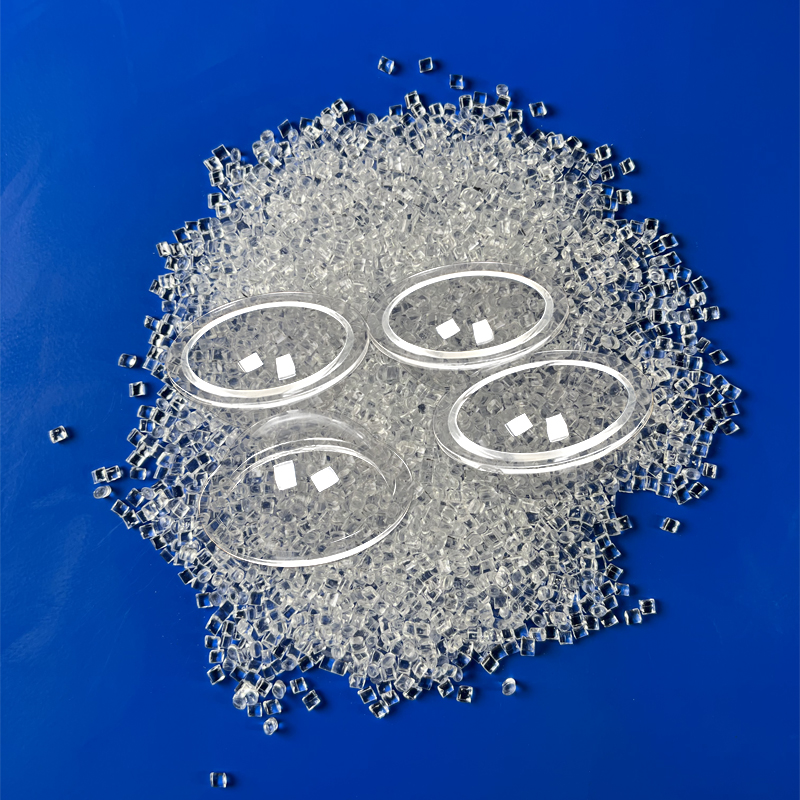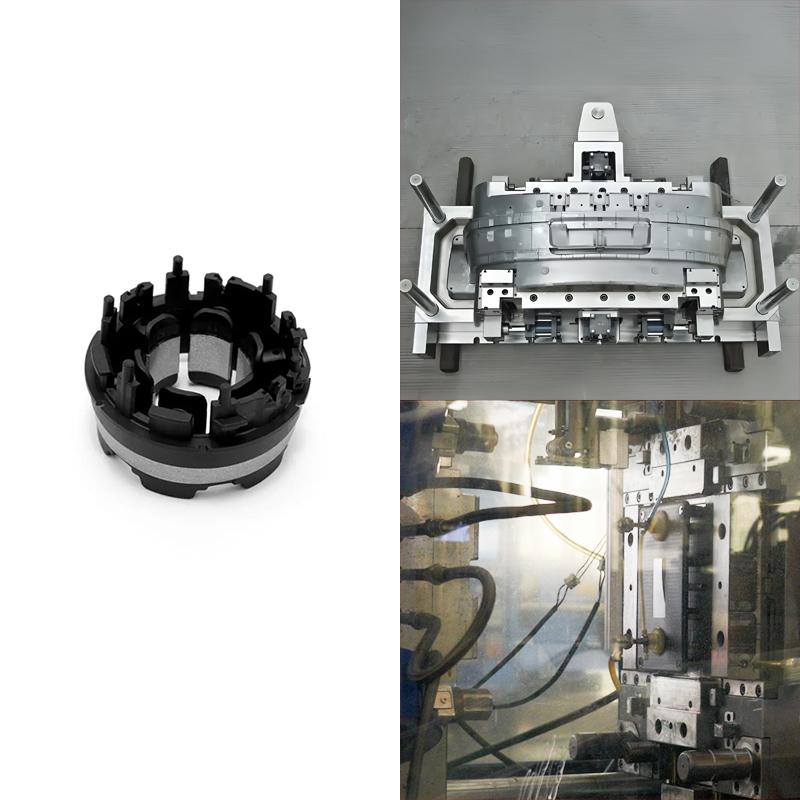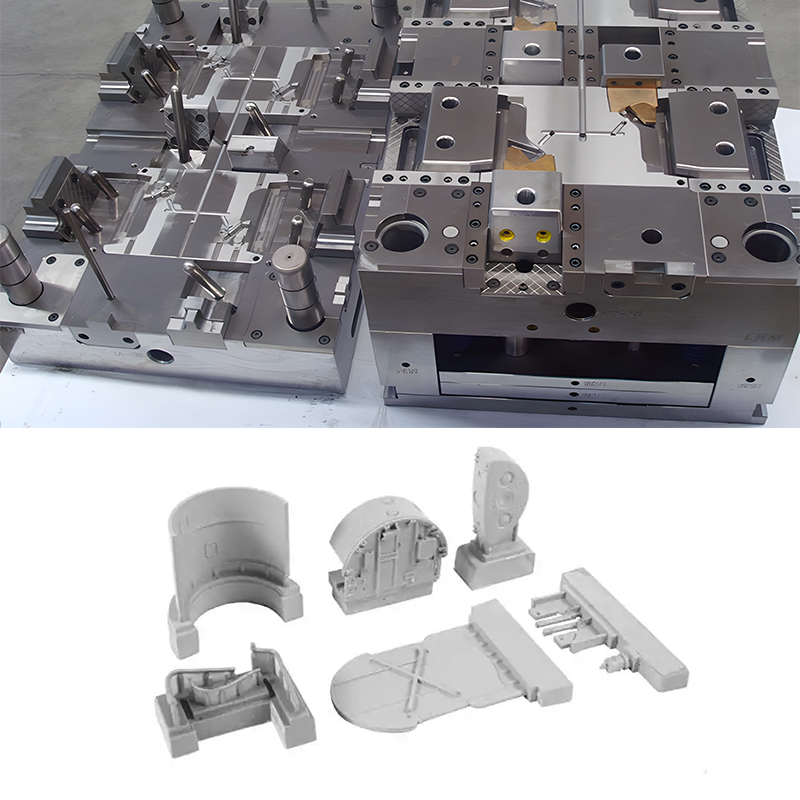Polymethyl Methacrylate (PMMA), commonly known as acrylic, is a transparent thermoplastic often used as a lightweight, shatter-resistant alternative to glass. Known for its clarity and durability, It has become a material of choice across various industries, from automotive to medical devices. This guide provides an in-depth look at PMMA plastic, covering its properties, applications, processing techniques, and material enhancements to help designers and manufacturers fully leverage this versatile material. So, without any delay, let’s closely explore all you need to know for Acrylic product design and manufacturing.
What Is Polymethyl Methacrylate (PMMA)?
PMMA plastic is a synthetic polymer of methyl methacrylate. It is formed through bulk polymerization, where methyl methacrylate monomers are combined with an initiator to create long polymer chains.
Acrylic stands out for its clarity, allowing over 90% light transmittance, higher than glass. It is also known for its excellent weatherability, withstanding exposure to sunlight, rain, and most chemicals.
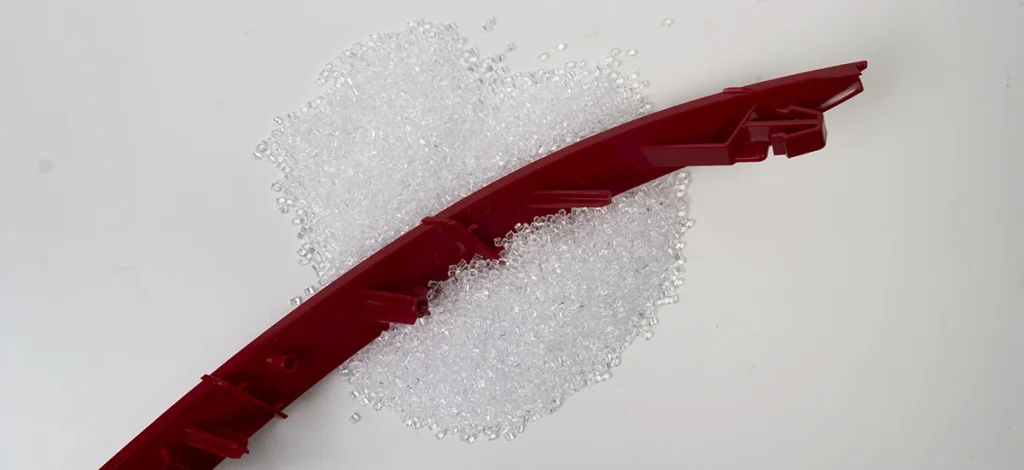
Types of PMMA (Acrylic)
There are different types of PMMA available, each with its unique properties and applications:
- Полиметилметакрилат (ПММА): The most common type, known for its optical clarity, impact resistance, and weather resistance.
- Poly(methyl methacrylate-co-methyl acrylate) (PMMA-MA): A copolymer with improved flexibility and toughness.
- Poly(methyl methacrylate-co-ethyl acrylate) (PMMA-EA): Incorporates ethyl acrylate monomers for enhanced flexibility and impact resistance.
- Poly(methyl methacrylate-co-butyl acrylate) (PMMA-BA): Combines PMMA with butyl acrylate monomers for improved flexibility, impact resistance, and chemical resistance.
- Impact-Modified Acrylic: Blended with impact modifiers to enhance toughness while maintaining optical clarity.
- UV-Resistant Acrylic: Formulated to resist yellowing and degradation from UV exposure, suitable for outdoor applications.
- Extruded Acrylic: Produced through extrusion for uniform thickness and excellent optical properties.
- Cast Acrylic: Manufactured by pouring acrylic resin into molds for superior optical clarity and surface finish.
Properties of PMMA (Acrylic)
Physical Properties of Acrylic
| Физические свойства | Описание |
| Optical Clarity | It allows 92% light transmittance, providing excellent transparency. |
| Refractive Index | Acrylic has a refractive index of 1.49, ensuring clear and undistorted vision. |
| Твердость поверхности | It exhibits high surface hardness, which enhances its durability and scratch resistance. |
| Устойчивость к царапинам | Acrylic offers good scratch resistance, making it less prone to surface damage than other plastics. |
| Поглощение влаги | Acrylic has low moisture absorption, ensuring dimensional stability in various environmental conditions. |
| Устойчивость к ультрафиолетовому излучению | Acrylic maintains its properties under various environmental conditions due to its high UV stability. |
Mechanical Properties of PMMA
| Механические свойства | Описание |
| Прочность на разрыв | It combines high tensile strength, making it suitable for various structural applications. |
| Прочность | It has moderate toughness, providing sufficient durability for many applications requiring transparency. |
| Устойчивость размеров | PMMA offers good dimensional stability, maintaining its shape and size under different conditions. |
| Легкий | Acrylic is significantly lighter than glass, making it easier to handle and install. |
| Устойчивость к ударам | It has lower impact resistance than polycarbonate but is still suitable for applications where transparency and durability are needed. |
Thermal Properties of PMMA
| Тепловые свойства | Описание |
| Melting Temperature | PMMA has a melting temperature of around 160°C, allowing it to maintain properties over a wide range of temperatures. |
| Температура перехода стекла | PMMA has a relatively high glass transition temperature of about 105°C, providing stability in high-temperature applications. |
Chemical Resistance of PMMA
| Химические свойства | Описание |
| Resistance to Acids and Alkalis | Acrylic is resistant to many chemicals, including dilute inorganic acids and alkalis. |
| Resistance to Hydrocarbons | Acrylic is resistant to aliphatic hydrocarbons, ensuring durability in various chemical environments. |
| Sensitivity to Chlorinated/Aromatic Hydrocarbons | It is unsuitable for chlorinated or aromatic hydrocarbons, esters, or ketones, which can damage the material. |
Electrical Properties of PMMA
| Электрическая недвижимость | Описание |
| Электрическая изоляция | Acrylic is an excellent electrical insulator, making it suitable for electrical and electronic applications. |
| Диэлектрическая прочность | PMMA provides high dielectric strength, ensuring effective insulation. |
| Dissipation Factor | It has a low dissipation factor, minimizing energy absorption in high-frequency applications. |
Environmental Stability
PMMA plastic’s resistance to UV light and weathering makes it ideal for outdoor applications. It can endure prolonged exposure to sunlight without significant degradation, maintaining its clarity and strength.
Advantages and Disadvantages of PMMA Plastic
Преимущества
- Прозрачность: Acrylic offers excellent optical clarity, making it ideal for applications requiring high-light transmission, such as lenses, displays, and lighting covers.
- Долговечность: It is resistant to impact, weathering, and UV radiation and maintains its properties over time, making it suitable for outdoor applications.
- Lightweight: Significantly lighter than glass, PMMA is easier to handle and install, reducing transportation and installation costs.
- Cost-Effective: Generally more affordable than glass and some other plastics, PMMA offers a cost-effective alternative without compromising on performance.
- Versatility: You can easily mold, machine, and color PMMA to suit various applications, providing flexibility in design and manufacturing processes.
- Non-Toxic: PMMA plastic is safe for use in food and medical applications and does not release harmful substances, ensuring safety and compliance with health standards.
Недостатки
- Scratch Sensitivity: PMMA material is more prone to scratching than glass, which requires careful handling and may necessitate protective coatings in specific applications.
- Low Resistance to Solvents: Certain solvents, such as acetone and alcohol, can damage it, limiting its use in environments where exposure to these chemicals is common.
- Тепловое расширение: PMMA expands and contracts more with temperature changes than glass or metals, affecting dimensional stability in temperature-variable environments.
- Brittleness: Compared to other plastics, PMMA plastic can be relatively brittle and may crack under high impact or stress, making it less suitable for high-stress applications.
- UV Degradation: Although UV-resistant grades are available, prolonged exposure to UV radiation can cause yellowing and degradation, impacting the material’s longevity and appearance.
- Limited Heat Resistance: It softens and deforms at high temperatures, restricting its use in applications requiring high heat resistance, such as near heat sources or in high-temperature processing.
- Воспламеняемость: PMMA is flammable and requires flame-retardant additives for improved fire resistance, limiting its use in applications with stringent fire safety requirements.
Key Applications of PMMA (Acrylic)
Автомобильная промышленность
Acrylic is used extensively in the automotive industry due to its optical clarity and durability. Common applications include:
- Headlight and Taillight Covers: Acrylic provides clear, durable covers that withstand impacts and weather conditions.
- Instrument Panels: The clarity and scratch resistance of PMMA make it ideal for protective covers on instrument panels.
- Interior Trim: Manufacturers use it in various interior components to provide aesthetic appeal and functional durability.
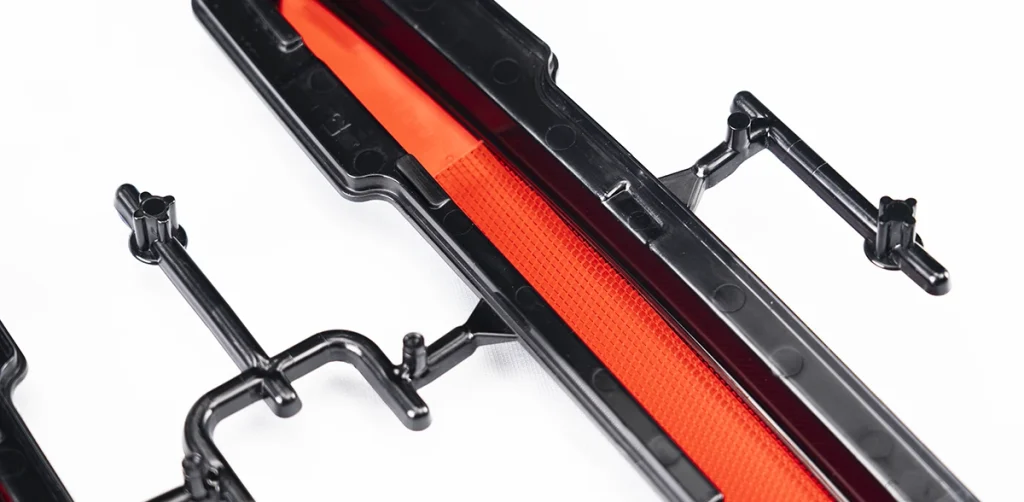
Строительство и архитектура
PMMA’s combination of clarity, strength, and weather resistance makes it suitable for a wide range of construction and architectural applications:
- Windows and Skylights: PMMA plastic offers a lightweight, shatter-resistant alternative to glass.
- Sound Barriers: Its clarity and impact resistance make PMMA an excellent material for sound barriers in urban areas.
- Decorative Panels: It can be colored and shaped for decorative purposes in interior and exterior designs.
Электроника и электроприборы
In the electronics industry, PMMA is used for its insulating properties and clarity:
- Displays and Screens: Manufacturers use it to produce clear, durable screens for electronic devices.
- Lighting Fixtures: Its high light transmittance and UV stability make Acrylic ideal for light diffusers and protective covers in lighting applications.
Медицинские приборы
PMMA’s biocompatibility and optical clarity make it suitable for various medical applications:
- Intraocular Lenses: Used in eye surgery due to its clarity and compatibility with human tissue.
- Bone Cement: Orthopedic surgeons use PMMA as bone cement, providing a durable and biocompatible solution.
Потребительские товары
PMMA is widely used in consumer goods for its aesthetic appeal and functional properties:
- Aquarium Tanks: PMMA’s clarity and impact resistance make it ideal for large aquarium tanks.
- Furniture: Transparent and colored PMMA is used to manufacture modern, durable furniture.
- Signage: PMMA’s ability to be easily colored and shaped makes it popular for signage and display products.
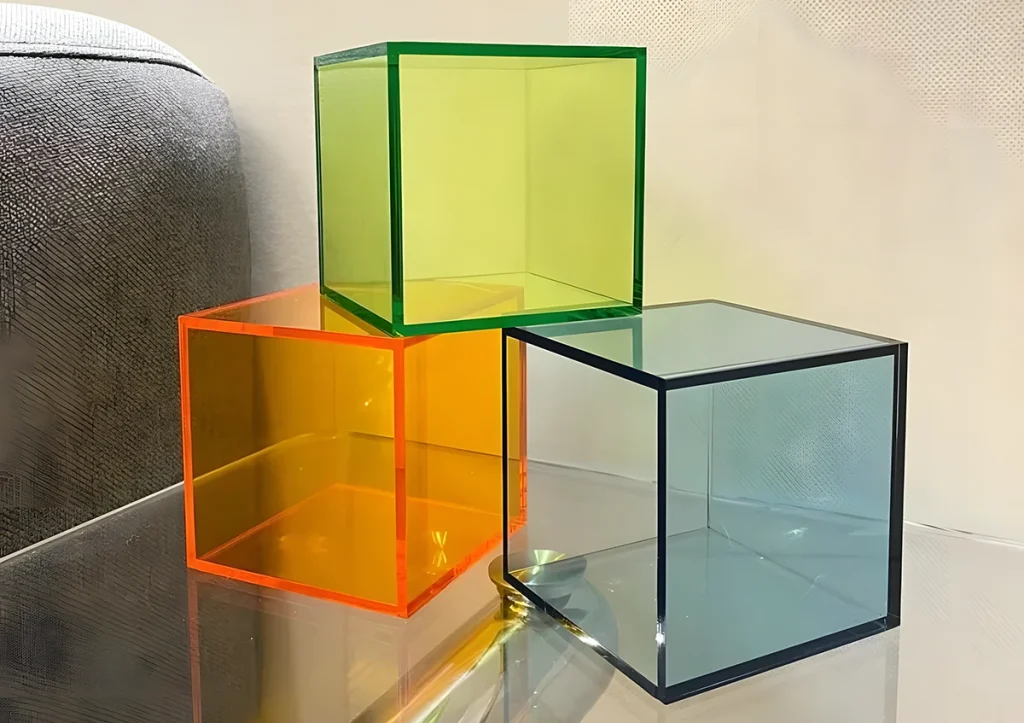
Safety Equipment
PMMA is utilized in safety equipment due to its impact resistance and clarity:
- Face Shields: It provides clear, durable protection for face shields used in medical and industrial settings.
- Protective Barriers: Retail and service environments use these as protective barriers due to their transparency and durability.
Enhancements and Modifications of PMMA
Модификаторы воздействия
To improve its impact resistance, manufacturers can modify PMMA with impact modifiers. These additives enhance PMMA’s ability to withstand high-impact forces without cracking, making it suitable for safety glazing and other high-impact applications.
УФ-стабилизаторы
UV stabilizers are added to PMMA to enhance its resistance to UV radiation. These stabilizers prevent the material from yellowing and degrading over time, extending its lifespan in outdoor applications.
Пластификаторы
Plasticizers are incorporated to improve the flexibility of PMMA. This modification is crucial for applications requiring more pliable materials, such as contact lenses and lightweight, shatter-resistant lenses for glasses.
Colorants and Dyes
Colorants can be added during synthesis to create a spectrum of transparent or opaque hues. This modification is often used for decorative or functional purposes in various applications.
Co-monomers
Co-monomers like methyl acrylate can be introduced to enhance Acrylic’s thermal stability, reducing its tendency to depolymerize during heat processing.
Филлеры
You can add fillers to modify PMMA’s final properties or improve cost-effectiveness. These can include glass fibers or other reinforcing materials to enhance strength and stiffness.
Processing Techniques for PMMA
Литье под давлением
Injection molding is a common technique for producing complex PMMA parts with high precision. The process involves melting the PMMA plastic and injecting it into a mold cavity, which cools and solidifies.
Processing Conditions for Injection Molding:
- Температура расплава: 200-250°C
- Температура формы: 40-80°C
- Давление впрыска: Due to Acrylic’s poor flow properties, high pressures are needed. Slow injection may be required to ensure correct flow and eliminate internal stresses.
Экструзия
Extrusion produces continuous PMMA profiles such as sheets, rods, and tubes. The process forces the molten PMMA through a die to create the desired shape.
Processing Conditions for Extrusion
- Температура экструзии: 180-250°C
- Screw Design: A degassing screw with an L/D ratio of 20-30 is recommended to ensure proper material flow and reduce defects.
Термоформование
Thermoforming involves heating a PMMA sheet until it becomes pliable, then shaping it over a mold using a vacuum or pressure. This process is suitable for creating large, lightweight parts with intricate shapes.
Кастинг
Casting is used to produce high-quality PMMA sheets and blocks with superior optical clarity. The process involves pouring liquid PMMA resin into molds and allowing it to cure.
Обработка
PMMA can be machined using conventional tools such as saws, drills, and routers. Proper cooling and lubrication are necessary to prevent overheating and surface defects.
Сварка
PMMA can be welded using various techniques, including hot-blade, hot-gas, ultrasonic, or spin welding. These methods allow for the assembly of complex PMMA structures.
3D-печать
It is also used for 3D printing, although it requires higher temperatures and careful handling to prevent warping. PMMA filaments are available in a wide array of colors. This makes them suitable for prototyping and small-scale production.
Environmental and Health Considerations of PMMA
Toxicity and Safety
Manufacturers generally consider PMMA non-toxic and BPA-free, making it safe for applications involving contact with food and skin. In its solid form, it is inert and does not leach harmful substances.
Воздействие на окружающую среду
While PMMA plastic is durable and long-lasting, it is not biodegradable. Recycling PMMA is possible through pyrolysis and depolymerization, although these methods are not as widespread as other plastics. To minimize environmental impact, it is essential to recycle or repurpose PMMA whenever possible.
Recycling
It produces sheets used in the construction, medical, and advertising industries. Recycling methods include:
- Pyrolysis: Heating PMMA without oxygen to break it down into its monomer components.
- Depolymerization: Using molten lead to obtain monomer MMA in high purity, though this process is less environmentally friendly due to the use of lead.
Заключение
Polymethyl Methacrylate (PMMA) is a versatile and high-performance thermoplastic that offers a unique combination of transparency, durability, and ease of fabrication. Its properties make it suitable for various applications across various industries, including automotive, construction, electronics, and medical devices.
By learning about the properties, uses, and processing methods of PMMA (Acrylic), designers and manufacturers can efficiently use this material to develop innovative and high-quality products.
Советы: Узнайте больше о других пластиках
